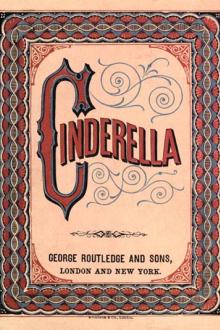Folk-lore of Shakespeare by Thomas Firminger Thiselton Dyer (well read books .TXT) 📕

"Crowdero, whom in irons bound, Thou basely threw'st into Lob's pound."
[16] Mr. Dyce considers that Lob is descriptive of the contrast between Puck's square figure and the airy shapes of the other fairies.
[17] "Deutsche Mythologie," p. 492.
[18] See Keightley's "Fairy Mythology," pp. 318, 319.
It occurs, also, in Massinger's "Duke of Milan" (iii. 2), where it means "behind the arras:"
Read free book «Folk-lore of Shakespeare by Thomas Firminger Thiselton Dyer (well read books .TXT) 📕» - read online or download for free at americanlibrarybooks.com
- Author: Thomas Firminger Thiselton Dyer
- Performer: -
Read book online «Folk-lore of Shakespeare by Thomas Firminger Thiselton Dyer (well read books .TXT) 📕». Author - Thomas Firminger Thiselton Dyer
Sail seas in cockles, have, and wish but for’t.”
Their dance is thus noticed in “Macbeth” (iv. 1):
While you perform your antic round.”
Witches also were supposed to have the power of vanishing at will, a notion referred to in “Macbeth” (i. 3), where, in reply to Banquo’s inquiry as to whither the witches are vanished, Macbeth replies:
As breath into the wind.”
In his letter to his wife he likewise observes: “They made themselves air, into which they vanished.” Hecate, in the third act, fifth scene, after giving instructions to the weird host, says:
Unto a dismal and a fatal end.”
To this purpose they prepared various ointments, concerning which Reginald Scot[64] says: “The devil teacheth them to make ointment of the bowels and members of children, whereby they ride in the air and accomplish all their desires. After burial they steal them out of their graves and seethe them in a caldron till the flesh be made potable, of which they make an ointment by which they ride in the air.” Lord Bacon also informs us that the “ointment the witches use is reported to be made of the fat of children digged out of their graves, of the juices of smallage, wolf bane, and cinquefoil, mingled with the meal of fine wheat; but I suppose the soporiferous medicines are likest to do it, which are henbane, hemlock, mandrake, moonshade—or rather nightshade—tobacco, opium, saffron,”[65] etc. These witch recipes, which are very numerous, are well illustrated in Shakespeare’s grim caldron scene, in “Macbeth” (iv. 1), where the first witch speaks of
From the murderer’s gibbet.”
We may compare a similar notion given by Apuleius, who, in describing the process used by the witch, Milo’s wife, for transforming herself into a bird, says: “That she cut the lumps of flesh of such as were hanged.”[66]
Another way by which witches exercise their power was by looking into futurity, as in “Macbeth” (i. 3), where Banquo says to them:
And say which grain will grow and which will not,
Speak then to me.”
Charles Knight, in his biography of Shakespeare, quotes a witch trial, which aptly illustrates the passage above; the case being that of Johnnet Wischert, who was “indicted for passing to the green-growing corn in May, twenty-two years since, or thereby, sitting thereupon tymous in the morning before the sun-rising; and being there found and demanded what she was doing, thus answered, I shall tell thee; I have been piling the blades of the corn. I find it will be a dear year; the blade of the corn grows withersones [contrary to the course of the sun], and when it grows sonegatis about [with the course of the sun], it will be a good, cheap year.”
According to a common notion firmly believed in days gone by, witches were supposed to make waxen figures of those they intended to harm, which they stuck through with pins, or melted before a slow fire. Then, as the figure wasted, so the person it represented was said to waste away also. Thus, in “Macbeth” (i. 3), the first witch says:
Shall he dwindle, peak, and pine.”
Referring to the histories of the Duchess of Gloucester and of Jane Shore, who were accused of practising this mode of witchcraft, Shakespeare, in “2 Henry VI.” (i. 2), makes the former address Hume thus:
With Margery Jourdain, the cunning witch,
With Roger Bolingbroke, the conjurer?
And will they undertake to do me good?”
She was afterwards, however, accused of consulting witches concerning the mode of compassing the death of her husband’s nephew, Henry VI. It was asserted that “there was found in the possession of herself and accomplices a waxen image of the king, which they melted in a magical manner before a slow fire, with the intention of making Henry’s force and vigor waste away by like insensible degrees.”
A similar charge was brought against Jane Shore, the mistress of Edward IV., by Richard, Duke of Gloucester. Thus, in “King Richard III.” (iii. 4), Gloucester asks Hastings:
That do conspire my death with devilish plots
Of damned witchcraft, and that have prevail’d
Upon my body with their hellish charms?”
And he then further adds:
Is, like a blasted sapling, wither’d up:
And this is Edward’s wife, that monstrous witch,
Consorted with that harlot, strumpet Shore,
That by their witchcraft thus have marked me.”
This superstition is further alluded to in “King John” (v. 4) by Melun, who, wounded, says:
Retaining but a quantity of life,
Which bleeds away, even as a form of wax
Resolveth from his figure ’gainst the fire?”
And, again, in “The Two Gentlemen of Verona” (ii. 4), Proteus says:
Which, like a waxen image ’gainst a fire,
Bears no impression of the thing it was.”[67]
Images were frequently formed of other materials, and maltreated in some form or other, to produce similar results—a piece of superstition which still prevails to a great extent in the East. Dubois, in his “People of India” (1825), speaks of magicians who make small images in mud or clay, and then write the names of their animosity on the breasts thereof; these are otherwise pierced with thorns or mutilated, “so as to communicate a corresponding injury to the person represented.” They were also said to extract moisture from the body, as in “Macbeth” (i. 3):
Referring to the other mischievous acts of witches, Steevens quotes the following from “A Detection of Damnable Driftes Practised by Three Witches, etc., arraigned at Chelmisforde, in Essex, 1579:” “Item—Also she came on a tyme to the house of one Robert Lathburie, who, dislyking her dealyng, sent her home emptie; but presently after her departure his hogges fell sicke and died, to the number of twentie.” Hence in “Macbeth” (i. 3) in reply to the inquiry of the first witch:
the second replies:
It appears to have been their practice to destroy the cattle of their neighbors, and the farmers have to this day many ceremonies to secure their cows and other cattle from witchcraft; but they seem to have been most suspected of malice against swine. Harsnet observes how, formerly, “A sow could not be ill of the measles, nor a girl of the sullens, but some old woman was charged with witchcraft.”[68]
Mr. Henderson, in his “Folk-Lore of the Northern Counties” (1879, p. 182), relates how a few years ago a witch died in the village of Bovey Tracey, Devonshire. She was accused of “overlooking” her neighbors’ pigs, so that her son, if ever betrayed into a quarrel with her, used always to say, before they parted, “Mother, mother, spare my pigs.”
Multiples of three and nine were specially employed by witches, ancient and modern. Thus, in “Macbeth” (i. 3), the witches take hold of hands and dance round in a ring nine times—three rounds for each witch, as a charm for the furtherance of her purposes:[69]
And thrice again, to make up nine.
Peace! the charm’s wound up.”
The love of witches for odd numbers is further illustrated (iv. 1), where one of them tells how
this being the witches’ way of saying four times.
In Fairfax’s “Tasso” (book xiii. stanza 6) it is said that
This notion is very old, and we may compare the following quotations from Ovid’s “Metamorphoses” (xiv. 58):
And, again (vii. 189-191):
Irroravit aquis; ternis ululatibus ora
Solvit.”
Vergil, too, in his “Eclogues” (viii. 75), says:
The belief in the luck of odd numbers is noticed by Falstaff in the “Merry Wives of Windsor” (v. 1):
“They say there is divinity in odd numbers, either in nativity, chance, or death!”
In “King Lear” (iv. 2) when the Duke of Albany tells Goneril,
From her material sap, perforce must wither
And come to deadly use”—
he alludes to the use that witches and enchanters were commonly supposed to make of withered branches in their charms.[70]
Among other items of witch-lore mentioned by Shakespeare may be noticed the common belief in the intercourse between demons and witches, to which Prospero alludes in the “Tempest” (i. 2):
Upon thy wicked dam, come forth!”
This notion is seriously refuted by Scot in his “Discovery of Witchcraft” (book iv.), where he shows it to be “flat knavery.”
The offspring of a witch was termed “Hag-seed,” and as such is spoken of by Prospero in the “Tempest” (i. 2).
Witches were also in the habit of saying their prayers backwards: a practice to which Hero refers in “Much Ado About Nothing” (iii. 1), where, speaking of Beatrice, she says:
How wise, how noble, young, how rarely featured,
But she would spell him backward.”
Familiar spirits[71] attending on magicians and witches were always impatient of confinement.[72] So in the “Tempest” (i. 2) we find an illustration of this notion in the following dialogue:
Lastly, the term “Aroint thee” (“Macbeth,” i. 3), used by the first witch, occurs again in “King Lear” (iii. 4), “Aroint thee, witch, aroint thee.” That aroint is equivalent to “away,” “begone,” seems to be agreed, though its etymology is uncertain.[73] “Rynt thee” is used by milkmaids in Cheshire to a cow, when she has been milked, to bid her get out of the way. Ray, in his “Collection of North Country Words” (1768, p. 52), gives “Rynt ye, by your leave, stand handsomely, as rynt you witch, quoth Bessie Locket to her mother. Proverb, Chesh.” Some connect it with the adverb “aroume,” meaning “abroad,” found in Chaucer’s “House of Fame” (book ii. stanza 32):





Comments (0)